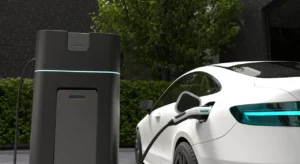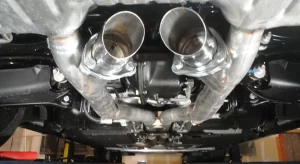LED headlights have become increasingly popular in recent years, and they offer many advantages over traditional halogen bulbs. However, with this newer technology comes the need to understand how to properly install and adjust LED headlight bulbs.
In this article, we will provide a comprehensive guide on how to properly adjust LED headlight bulbs so that you can get the most out of your vehicle’s lighting system.
Steps to Adjust LED Headlight Bulbs
Adjusting LED headlight bulbs is similar to adjusting halogen headlight bulbs, but there are a few differences to keep in mind. Here are the general steps for adjusting LED headlight bulbs:
1. Check the owner’s manual
Before adjusting your LED headlights, it’s a good idea to consult the owner’s manual to determine the correct adjustment method for your specific vehicle.
Suggestion: Check Out The Top 7 Best Tuner For F150 Ecoboost To Buy Online.
2. Park the vehicle on a level surface
Make sure the vehicle is parked on a flat surface and that the headlights are aimed at a garage door or other flat surface to accurately assess the beam pattern.
3. Measure the distance from the ground to the center of the headlight
Use a tape measure or ruler to determine the height of the headlight from the ground. This measurement will be used to adjust the vertical aim of the headlight.
4. Adjust the headlight aim
Use the adjustment screws located on the back of the headlight assembly to adjust the aim of the headlight. LED headlight bulbs from reputable brands have a similar adjustment mechanism to halogen bulbs. Adjust the screws until the beam pattern is aligned with the desired height and angle.
5. Test the headlights
Once you have adjusted the headlights, turn them on and observe the beam pattern on the flat surface. The beam should be focused and not too high or too low, and should not be aimed at oncoming traffic.
Benefits of LED headlight bulbs
There are several benefits of LED (light-emitting diode) headlight bulbs over traditional halogen bulbs. Here are some of the main advantages:
1. Brighter and more efficient
LED headlight bulbs are generally brighter than halogen bulbs, producing a more intense and focused beam of light. They are also more efficient, using less energy and generating less heat than halogen bulbs.
2. Longer lifespan
LED bulbs have a longer lifespan than halogen bulbs, with some models lasting up to 25,000 hours or more. This means you’ll need to replace them less frequently and save money in the long run.
Popular For You: Top 6 Best Toyota Dealerships In Denver CO: A Comprehensive Guide.
3. More Versatile
LED bulbs come in a variety of shapes and sizes, making them more versatile than halogen bulbs. This allows them to be used in a wider range of vehicles and applications.
4. Better color temperature
LED bulbs produce a more natural and comfortable light than halogen bulbs, with a color temperature that is closer to daylight. This can reduce eye strain and improve visibility, especially in low-light conditions.
5. Easy to install
LED headlight bulbs are generally easy to install and can be done without the need for any special tools or modifications to the vehicle.
Last Words
It is important to adjust LED headlight bulbs properly, as the wrong adjustment can cause glare and discomfort for other drivers. Taking the necessary steps to choose the right bulb, ensuring a secure connection, and making the proper adjustments will ensure that your LED headlight bulbs work well and efficiently. Don’t forget to check your state laws to make sure you stay compliant with any restrictions or regulations in place. With this knowledge, you can safely and confidently adjust LED headlight bulbs for optimal performance.





